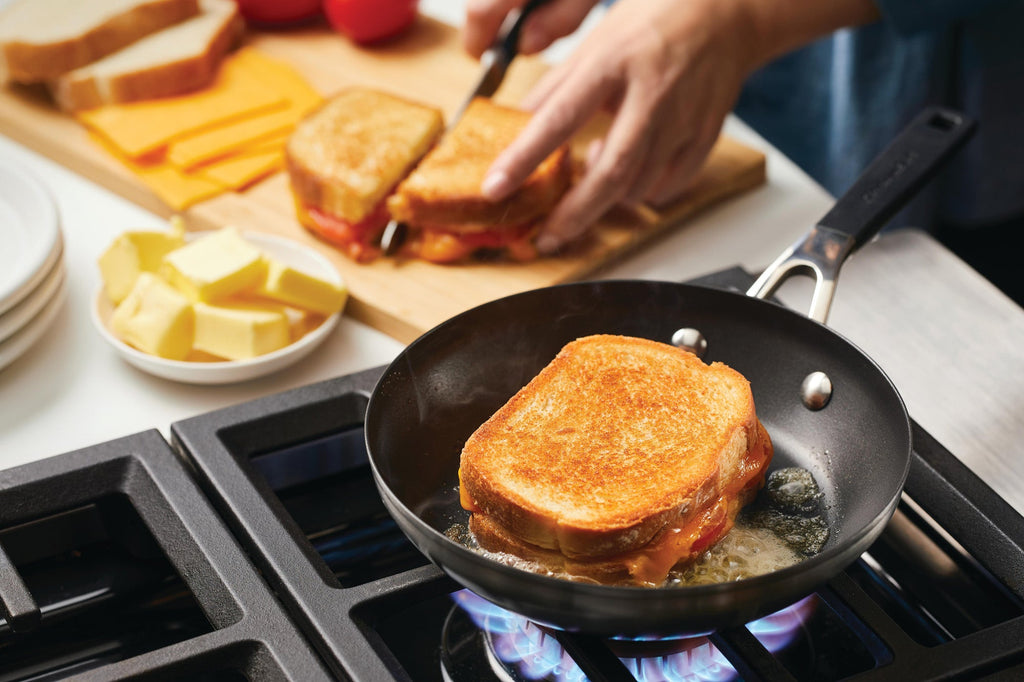When it comes to essential kitchen tools, understanding the differences between a skillet and a saute pan is vital. These tools, while seemingly similar, are designed for specific cooking techniques that can significantly affect the outcome of your culinary creations. In this comprehensive guide, we’ll delve into the specifics of skillet vs saute pan, helping you make informed decisions in the kitchen.

Introduction to Skillets and Saute Pans
Are you delighted to improve your culinary skills? The journey starts with knowing your tools. A skillet is often interchangeable with a frying pan, recognizable by its slanted sides and broad, flat base. In contrast, a saute pan features straight sides and a large surface area, ideal for techniques that require less stirring. Understanding these differences can help you perfect your cooking methods and elevate your dishes.

Main Characteristics of Skillets
Shape and Design
Skillets typically have outward-sloping sides. This design makes it easier to flip foods like omelets and pancakes. The slanted sides also allow for easy access with spatulas, which is excellent for quick frying and browning.
Material and Heat Distribution
Skillets are often made of cast iron, stainless steel, or non-stick materials. Cast iron skillets, in particular, are praised for their even heat distribution and retention. According to Better Homes & Gardens, maintaining these tools ensures their longevity and performance.
Common Uses
Skillets are multi-functional. They’re perfect for searing meats, frying eggs, or making grilled sandwiches. Their versatile nature makes them a staple in any kitchen.

Main Characteristics of Saute Pans
Shape and Design
Saute pans have straight sides and a larger surface area. This design helps in cooking techniques that require tossing or stirring ingredients, such as sauting vegetables.
Material and Heat Distribution
Usually, saute pans are made from stainless steel, aluminum, or multilayer materials for optimal heat distribution, essential for achieving consistent results in dishes like risotto or delicate sauces.
Common Uses
Saute pans excel in cooking methods that involve liquids. They are ideal for making sauces, stews, and dishes that require deglazing after searing.
Key Differences Between Skillets and Saute Pans
Shape and Sides
The most noticeable difference is in their shape. Skillets’ sloped sides make them excellent for quick frying and flipping, while saute pans’ straight sides are perfect for dishes that require frequent stirring.
Cooking Techniques
Use a skillet for high-heat searing and browning. For dishes that need a lid for moist heat cooking, like braises or reductions, a saute pan is more suitable.
Choosing the Right Pan for Your Needs
Consider Your Cooking Style
If you frequently cook meats and require high heat, a skillet is your go-to pan. For recipes that involve sauces and liquids, a saute pan will serve you best.
Material Preferences
Your choice of material also matters. For example, cast iron skillets are exceptional for heat distribution and retention, whereas stainless steel saute pans are great for even cooking and durability.
Maintenance and Care
Caring for Skillets
Maintaining a cast iron skillet is crucial. Regular seasoning and proper cleaning techniques, as highlighted in this guide by The Pioneer Woman, can extend the life of your pan significantly.
Caring for Saute Pans
Saute pans require less intensive care but should still be hand-washed and dried promptly to avoid rust and prolong their lifespan.
Frequently Asked Questions
What is the main difference between a skillet and a saute pan?
The primary difference is in the shape and design. Skillets have sloped sides, making them ideal for quick frying and flipping, while saute pans have straight sides, better suited for liquid-based cooking and frequent stirring.
Can I use a skillet instead of a saute pan?
It depends on the dish. You can use a skillet for some tasks that a saute pan handles, but for liquid-heavy recipes that require lid coverage and frequent stirring, a saute pan is more appropriate.
Which material is best for skillets and saute pans?
Cast iron is excellent for skillets due to its heat retention properties. Stainless steel is preferred for saute pans for its even heat distribution and durability.
As an Amazon Associate, I earn from qualifying purchases.
